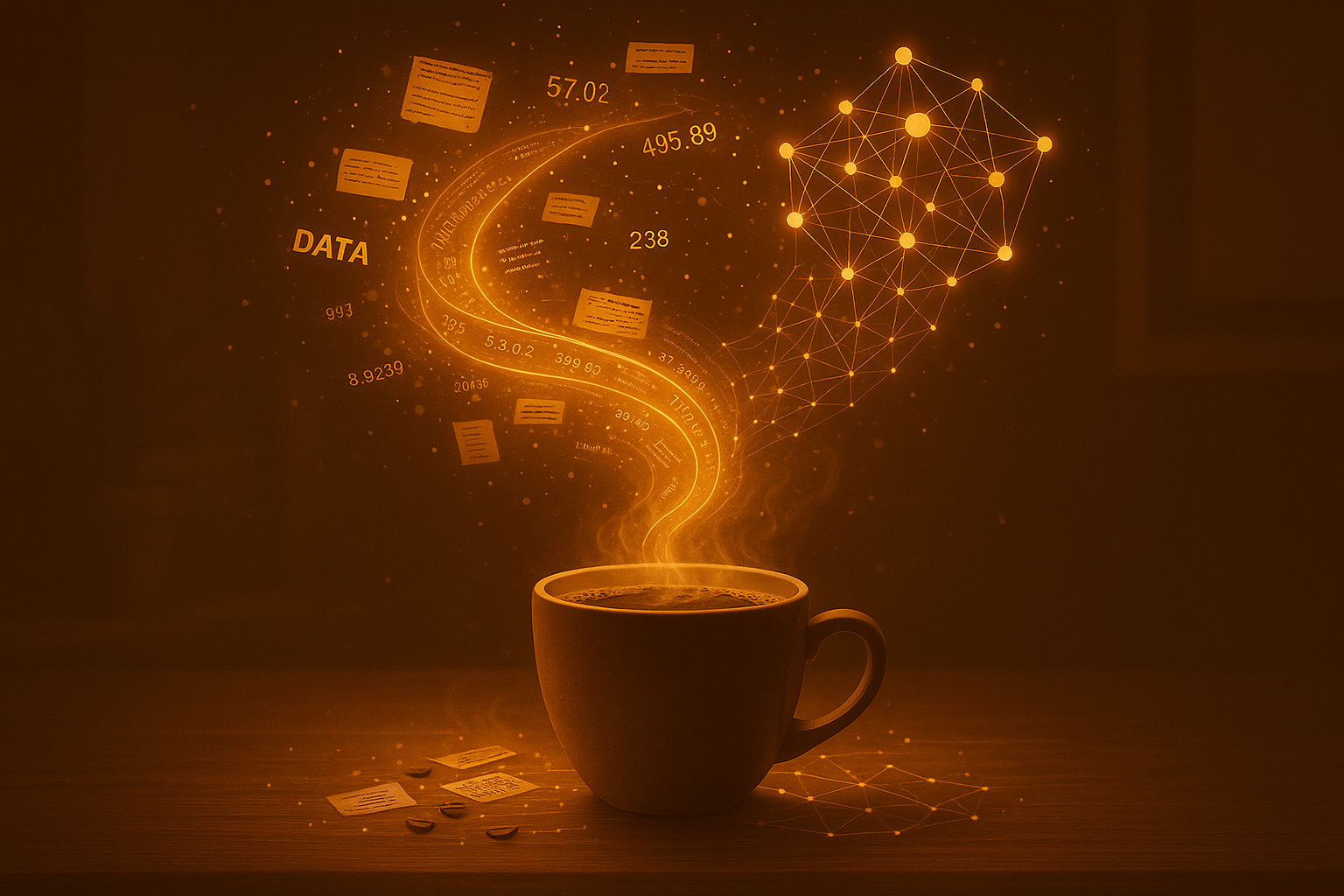
What Is Training Data? The Secret Ingredient Behind Every AI Tool You Use
I was explaining AI to a friend last month when she asked the question that stops everyone: "But how does AI actually learn anything?"
It's the right question. Because AI doesn't come pre-loaded with knowledge like a programmed calculator. It learns. And what it learns from is called training data.
The Coffee Shop Analogy
Imagine you're training a new barista. You don't just tell them "make good coffee." That's useless.
Instead, you show them examples. Lots of examples. You demonstrate the perfect espresso shot dozens of times. You show them what over-extracted looks like. What under-extracted tastes like. You let them practice on hundreds of cups until they recognize the patterns.
That's exactly what training data does for AI. It's the collection of examples that teaches an AI system what "good" looks like.
What Training Data Actually Is
Training data is a collection of examples used to teach an AI model how to perform a specific task.
For a spam filter, training data is thousands of emails labeled "spam" or "not spam." For a voice assistant, it's recordings of people speaking with transcripts of what they said. For image recognition, it's photos labeled with what's in them.
The AI studies these examples, looking for patterns. It's finding the invisible rules that separate spam from real emails, that turn sound waves into words, that distinguish a cat from a dog.
Think of training data as the textbook, the practice problems, and the answer key all rolled into one.
Why Training Data Is Everything
Here's the uncomfortable truth: even the most sophisticated AI is only as good as its training data.
You could have the most advanced AI architecture in the world, but if you train it on bad examples, you get bad results. It's like training that barista exclusively on instant coffee and expecting them to master pour-overs.
This is why companies like Google and OpenAI spend millions collecting and organizing training data. It's not the secret sauce - it's the entire meal.
The Quality Problem
Not all training data is created equal. This is where things get interesting.
If your training data has biases, your AI learns those biases. If it has errors, your AI learns to make those same errors. If it's missing certain scenarios, your AI won't know how to handle them.
Remember when early AI image systems couldn't recognize people with darker skin tones? That wasn't a programming error. It was a training data problem. The datasets didn't include enough diverse examples.
Garbage in, garbage out. But with AI, it's more like: biased in, biased out. Incomplete in, incomplete out.
How Much Training Data Is Needed?
The frustrating answer: it depends.
Simple tasks might need thousands of examples. Complex tasks like language understanding need millions or billions. ChatGPT was trained on hundreds of billions of words from books, websites, and articles.
But more isn't always better. Quality beats quantity. A thousand perfect examples can outperform ten thousand messy ones.
It's like learning to make coffee. Making 10,000 bad cups won't teach you as much as making 100 cups with careful feedback and adjustment.
Where Training Data Comes From
This is the question that keeps lawyers busy.
Some training data is collected specifically for AI: medical images labeled by doctors, voice recordings from paid volunteers, specially curated datasets.
But a lot of training data comes from the internet. Everything you've ever posted publicly, every photo you've shared, every comment you've written - it's potentially training data.
This raises huge questions about consent, copyright, and compensation. We're still figuring out the ethics and legality of it all.
What This Means For You
Understanding training data changes how you think about AI.
When an AI tool gives you a weird answer, it's not being stupid. It probably just never saw that scenario in its training data. When it's biased, it's reflecting biases in the examples it learned from.
AI isn't magic or consciousness. It's pattern matching on steroids, and those patterns come entirely from training data.
This also means you can be strategic. When evaluating AI tools, ask: What was this trained on? Does the training data match my use case? Is it recent enough to be relevant?
The Bottom Line
Training data is the foundation of everything AI does. It's the examples AI learns from, the source of its knowledge, and the limit of its capabilities.
Think of AI as a student and training data as everything that student has ever studied. No matter how smart the student is, they can only work with what they've learned.
The next time you use an AI tool, whether it's autocorrect on your phone or a chatbot at work, remember that behind every response is a massive collection of training data. Someone had to gather it, label it, and clean it.
That's the unsexy truth about AI. It's not magic. It's millions of examples, carefully organized, teaching machines to recognize patterns.
Next time, we'll talk about what happens after training, how AI actually uses what it learned. Bring your coffee.